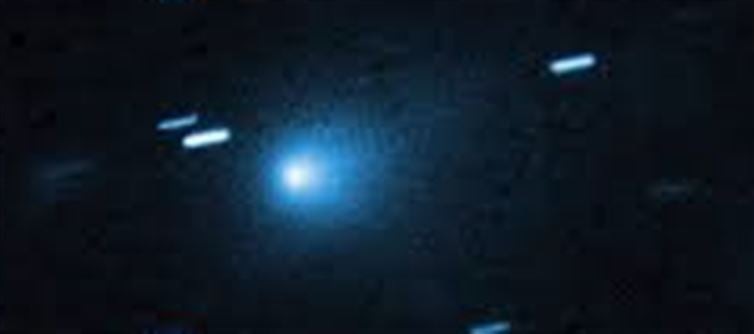
In a stunning celestial event, interstellar comet 3I/ATLAS has been photographed by Mars orbiters, offering scientists and space enthusiasts alike a once-in-a-lifetime glimpse of a comet that traveled from beyond our solar system. These rare images were captured by the European Space Agency's (ESA) spacecraft, namely the ExoMars Trace Gas Orbiter (TGO) and the Mars Express spacecraft, during the comet’s close flyby of Mars on October 3, 2025.
What is Comet 3I/ATLAS?
Comet 3I/ATLAS is a fascinating object, as it is the first confirmed interstellar comet to pass through our solar system. Unlike typical comets, which originate from the Oort Cloud or the Kuiper Belt within our solar system, 3I/ATLAS comes from interstellar space—a region beyond our solar system, making its journey and study unique in the field of astronomy.
· Origin: The comet is thought to have originated from outside our solar system, and its designation as "3I" reflects its interstellar origins (with "I" standing for interstellar).
· Trajectory: The comet is zooming through our solar system at a high speed, and scientists are using this opportunity to study it as it makes its close pass by Mars.
Incredible Images from Mars Orbiters
The ESA’s ExoMars Trace Gas Orbiter (TGO) and Mars Express spacecraft managed to capture clear, high-resolution images of the comet as it approached Mars. This marks a significant achievement for the space agencies, as it is incredibly rare for such a comet to pass this close to a planet in our solar system.
· ExoMars TGO: Primarily designed for studying the atmosphere of Mars, the TGO’s instruments were also able to capture the comet’s passage, offering valuable insights into its composition and behavior.
· Mars Express: The Mars Express orbiter, which has been circling the red Planet since 2003, also played a key role in capturing the event, using its high-tech camera system to record the comet's brief but thrilling appearance.
Scientific Importance of the Event
This interstellar comet’s flyby of Mars provides a unique opportunity for scientists to study an object from outside the solar system in unprecedented detail. The data gathered from these spacecraft will help researchers better understand the composition and structure of interstellar objects, as well as their behavior as they travel through the solar system.
· Interstellar Exploration: Since 3I/ATLAS is the first interstellar comet to pass through the solar system, it offers a unique glimpse into the kinds of objects that exist beyond the solar system.
· Comet Composition: Scientists are particularly interested in analyzing the comet’s gaseous and icy components, which could offer clues about the materials that existed in the early universe before stars and planets formed.
A Monumental Moment for Space Exploration
The flyby of 3I/ATLAS represents a rare event that will continue to be analyzed for years to come. As space technology improves, it’s likely that we will see more interstellar objects passing through our solar system, and the data from this event will play a key role in future space exploration and research.
· Future Missions: With the ongoing exploration of interstellar space through missions like NASA's New Horizons and ESA’s future endeavors, events like this will help guide our understanding of the wider universe.
What’s Next for Comet 3I/ATLAS?
After its close encounter with Mars, 3I/ATLAS will continue on its trajectory out of our solar system, never to return. However, the data and images collected during this brief interaction with our planetary neighborhood will continue to be studied, offering valuable information for years to come.
In Conclusion: The rare flyby of interstellar comet 3I/ATLAS past Mars, captured by the ESA's spacecraft, is a historic moment in space exploration. It brings us closer to understanding not just the mysteries of our solar system, but also the greater cosmic environment beyond.
Disclaimer:
The views and opinions expressed in this article are those of the author and do not necessarily reflect the official policy or position of any agency, organization, employer, or company. All information provided is for general informational purposes only. While every effort has been made to ensure accuracy, we make no representations or warranties of any kind, express or implied, about the completeness, reliability, or suitability of the information contained herein. Readers are advised to verify facts and seek professional advice where necessary. Any reliance placed on such information is strictly at the reader’s own risk..jpg)




 click and follow Indiaherald WhatsApp channel
click and follow Indiaherald WhatsApp channel